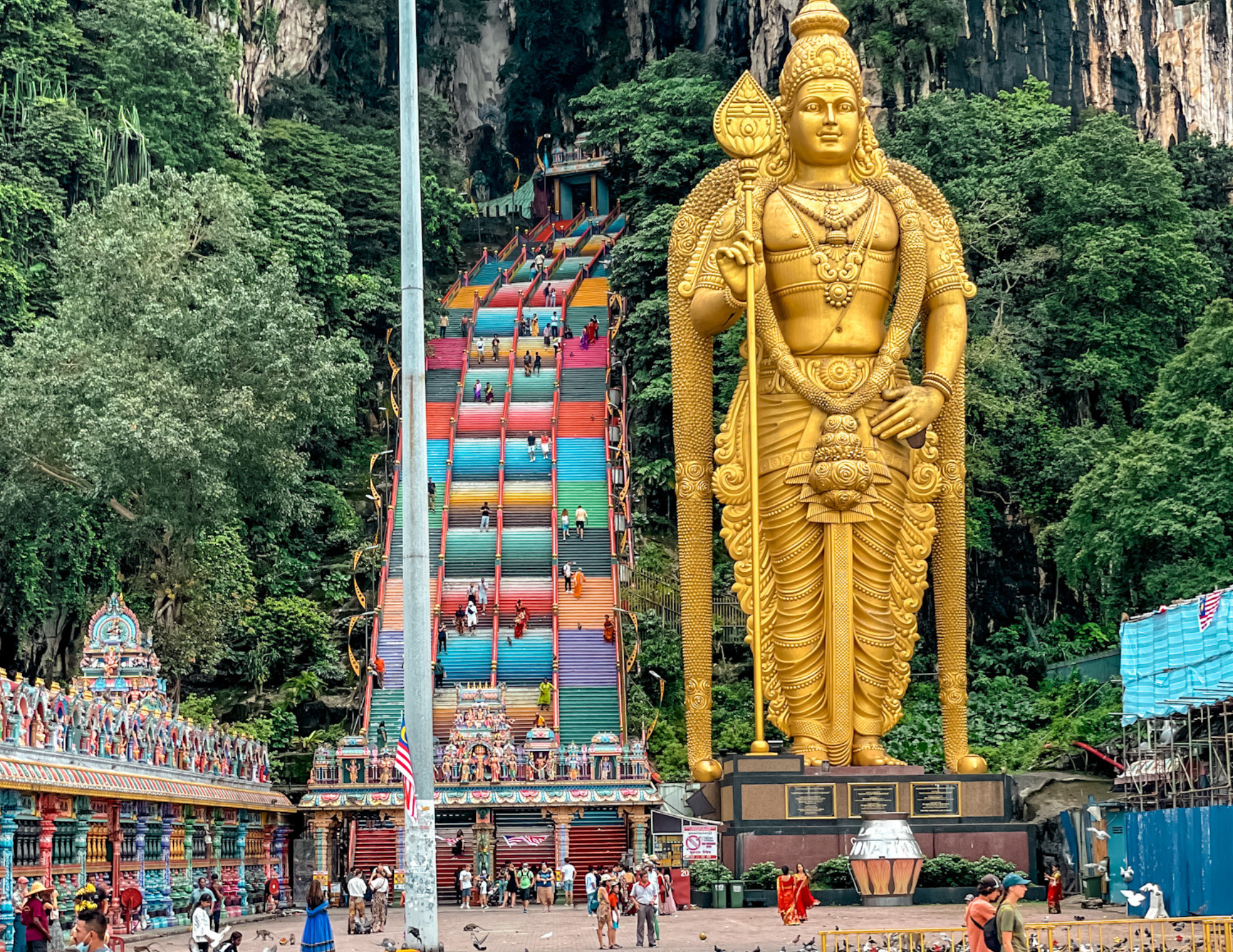Updates October 2025
Malaysia’s Batu Caves are home to one of the most important Hindu shrines in the world… I climbed to the top. Just 13 km north of downtown KL, Batu Caves is a soaring limestone hill honeycombed with caverns and crowned by the Temple Cave (Cathedral Cave), a living temple to Lord Murugan. At the base stands the gold Murugan statue - 42.7 m (140 ft) tall, the tallest statue in Malaysia, beside the 272 rainbow-painted steps that lead into the main cavern. The site is the heart of Thaipusam in Malaysia and one of the country’s most-visited sacred places.
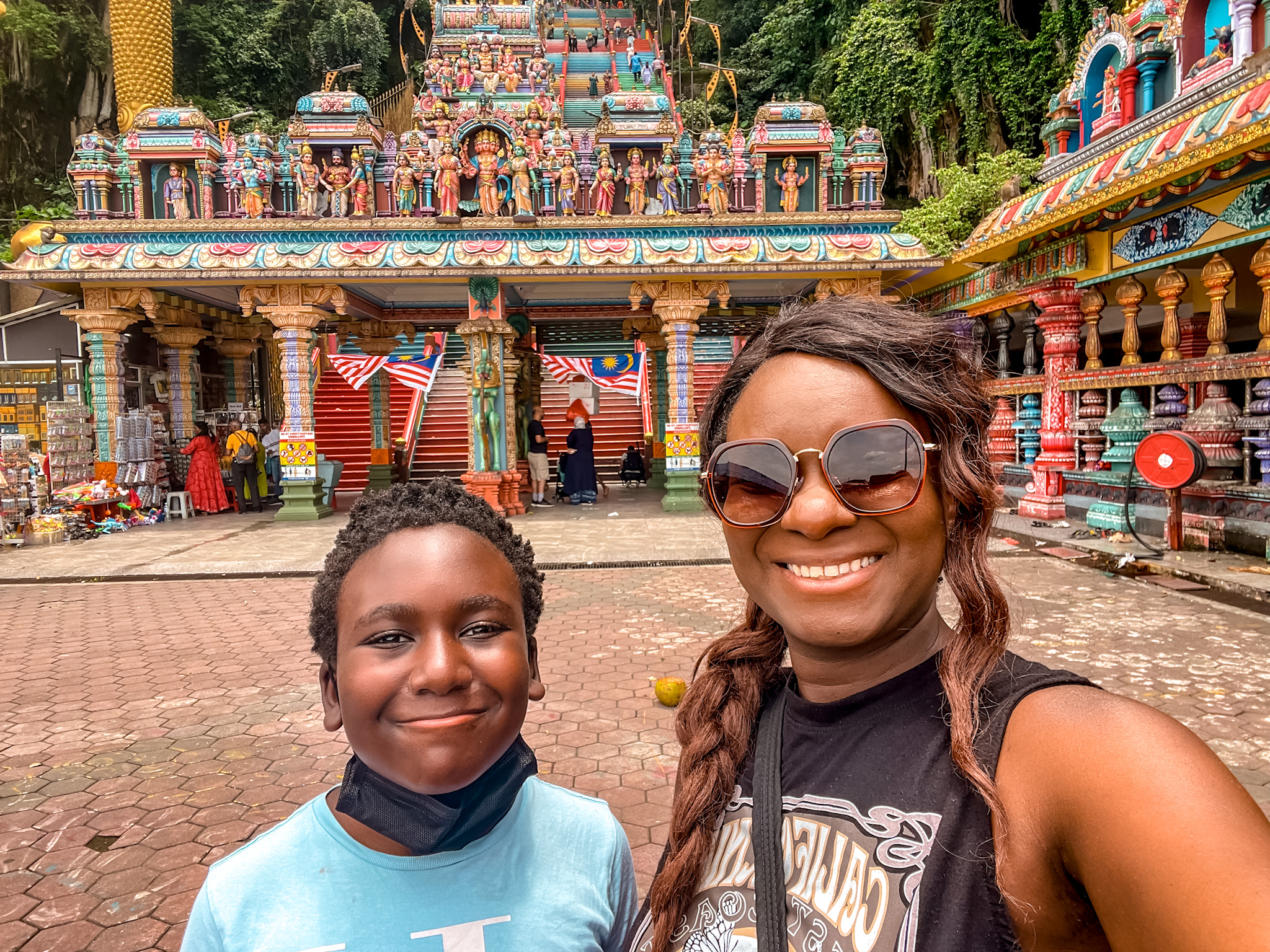
A LITTLE HISTORY (AND HOW IT BECAME A TEMPLE)
The limestone here is ancient - often dated to ~400 million years, but the caves entered modern history as guano sites in the 19th century. In the 1890s, Tamil merchants led by K. Thamboosamy Pillai consecrated the largest cavern as a shrine to Murugan; the first Thaipusam celebration at Batu Caves followed soon after (1892). The original wooden stairway was replaced with 272 concrete steps in 1940, repainted in 2018 into today’s photogenic rainbow. The gold Murugan statue was unveiled in 2006, anchoring the complex as a national icon.
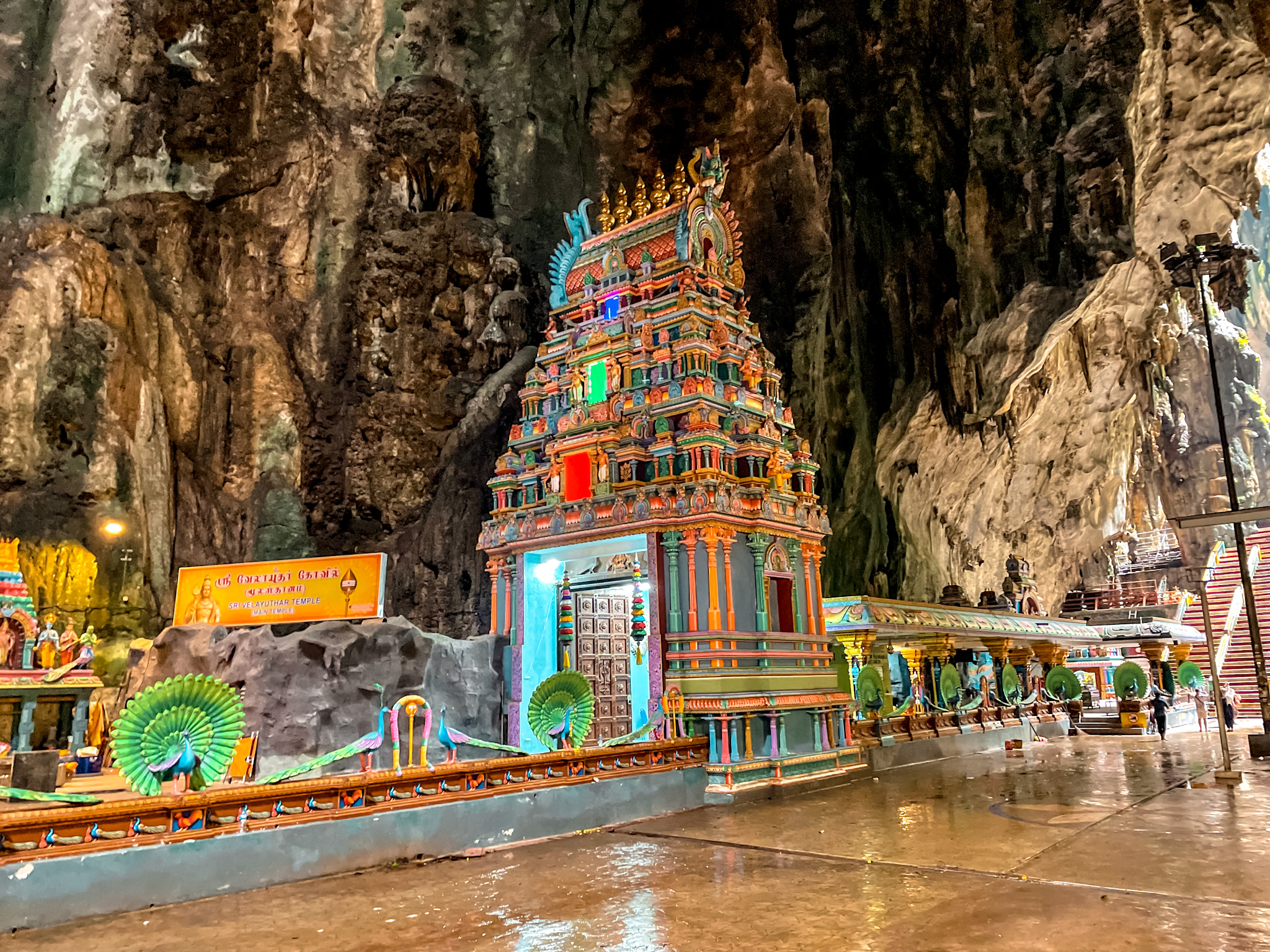
WHAT’S INSIDE: THE CAVES & AREAS (HOW TO PRIORITIZE)
• Temple Cave (Cathedral Cave) The main free temple space at the top of the 272 steps: a vast, open-roof cavern with shrines and daily worship. This is “the” Batu Caves experience; plan your climb for early morning or late afternoon for cooler air and softer light.
• Ramayana Cave - At ground level (left side as you face the steps), a walk-through retelling of the Ramayana in neon-lit tableaux; small entry fee (commonly reported around RM 15 for foreign visitors). Look for the Hanuman statue marking the entrance.
• Dark Cave (conservation area) - Once famous for guided ecology tours; closed since the pandemic and as of 2025 many reports still note it’s not operating. Treat this as “check on the day” rather than a guaranteed stop.
• Art Gallery / Museum areas – Smaller, paid exhibits at the base come and go; policies and pricing change. If you’re tight on time, prioritize Temple Cave + Ramayana Cave.
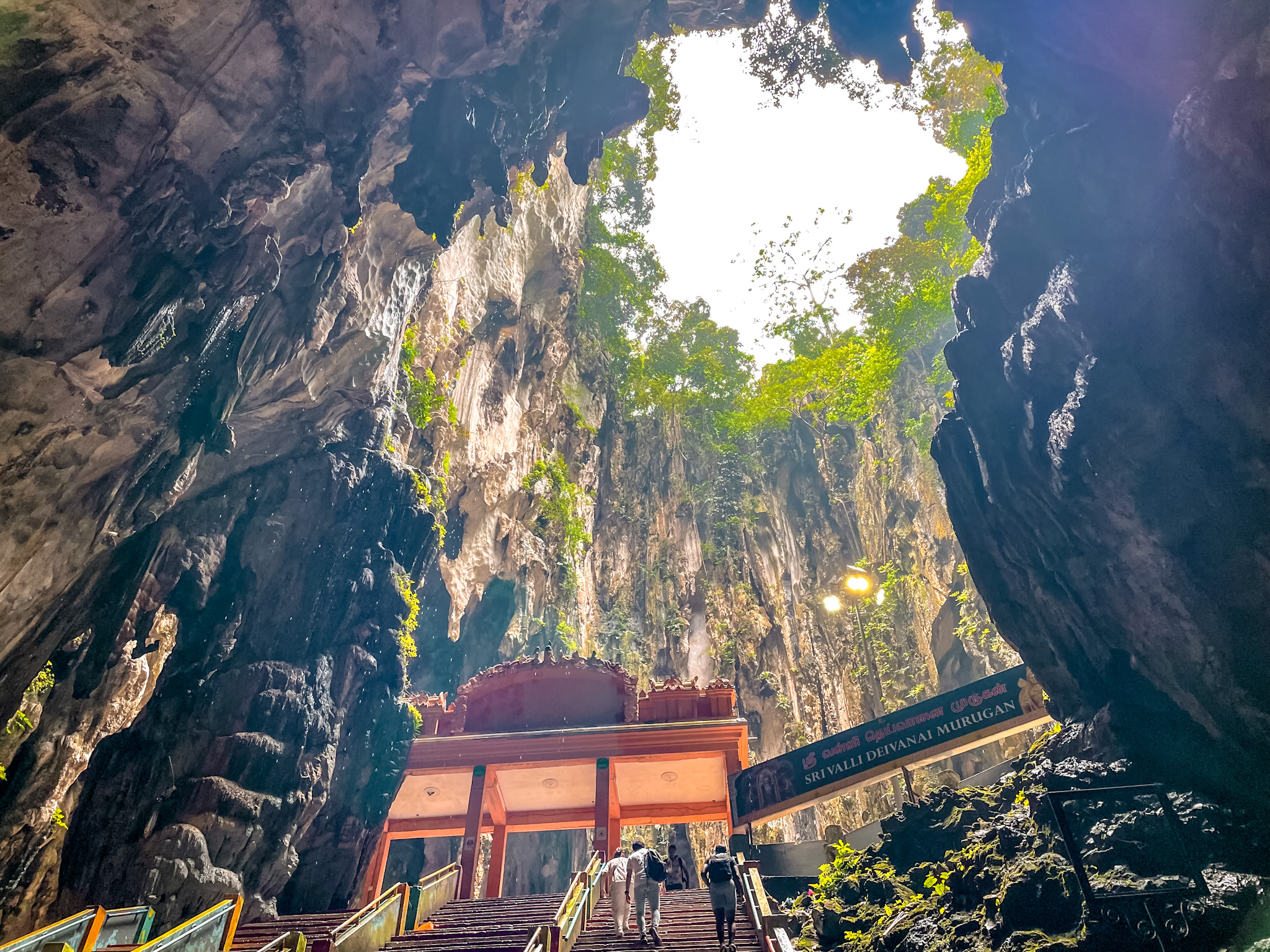
HOURS, FEES, DRESS CODE (2025 SNAPSHOT)
Batu Caves is generally open daily from about 6:00–9:00 (06:00–21:00). Temple Cave entry is free; some side caves charge small fees (e.g., Ramayana Cave). Dress modestly, shoulders and knees covered. If you arrive in shorts, expect to rent a sarong at the base. Arrive early on weekends; crowds spike after 9 am and again mid-afternoon.
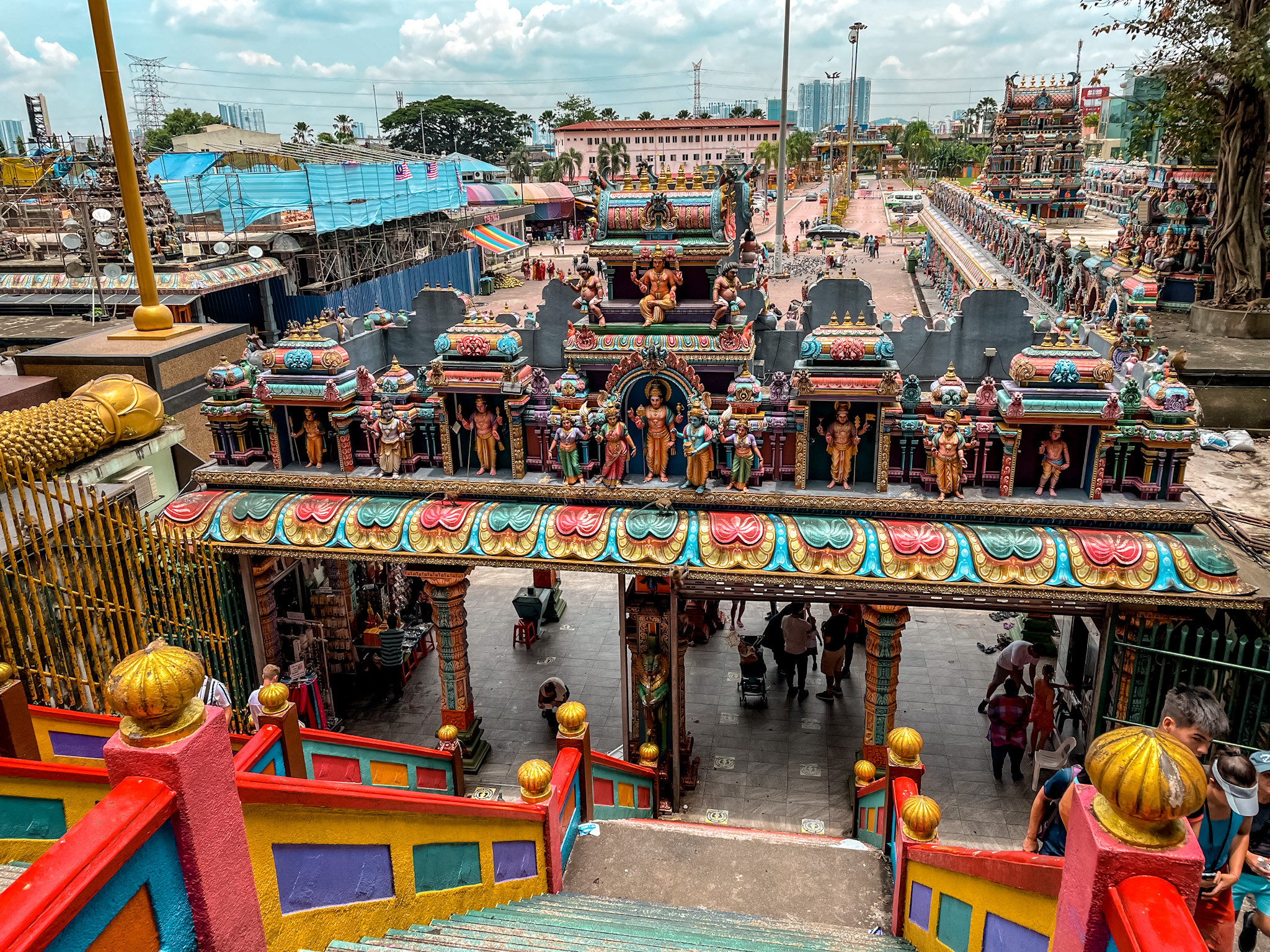
GETTING THERE (CAR-FREE IS BEST)
• KTM Komuter from KL Sentral → Batu Caves Station: Direct, cheap, and about 30–35 minutes; the station is steps from the complex. Trains run throughout the day on the Batu Caves–Pulau Sebang line (see KTM timetable).
• Grab/Taxi: Easy from anywhere in KL, but traffic and event days (especially Thaipusam) can cause long delays, build in margin.
• Tours: Handy if you’re pairing Batu Caves with fireflies, pewter factory, or Genting; otherwise the train is simplest.
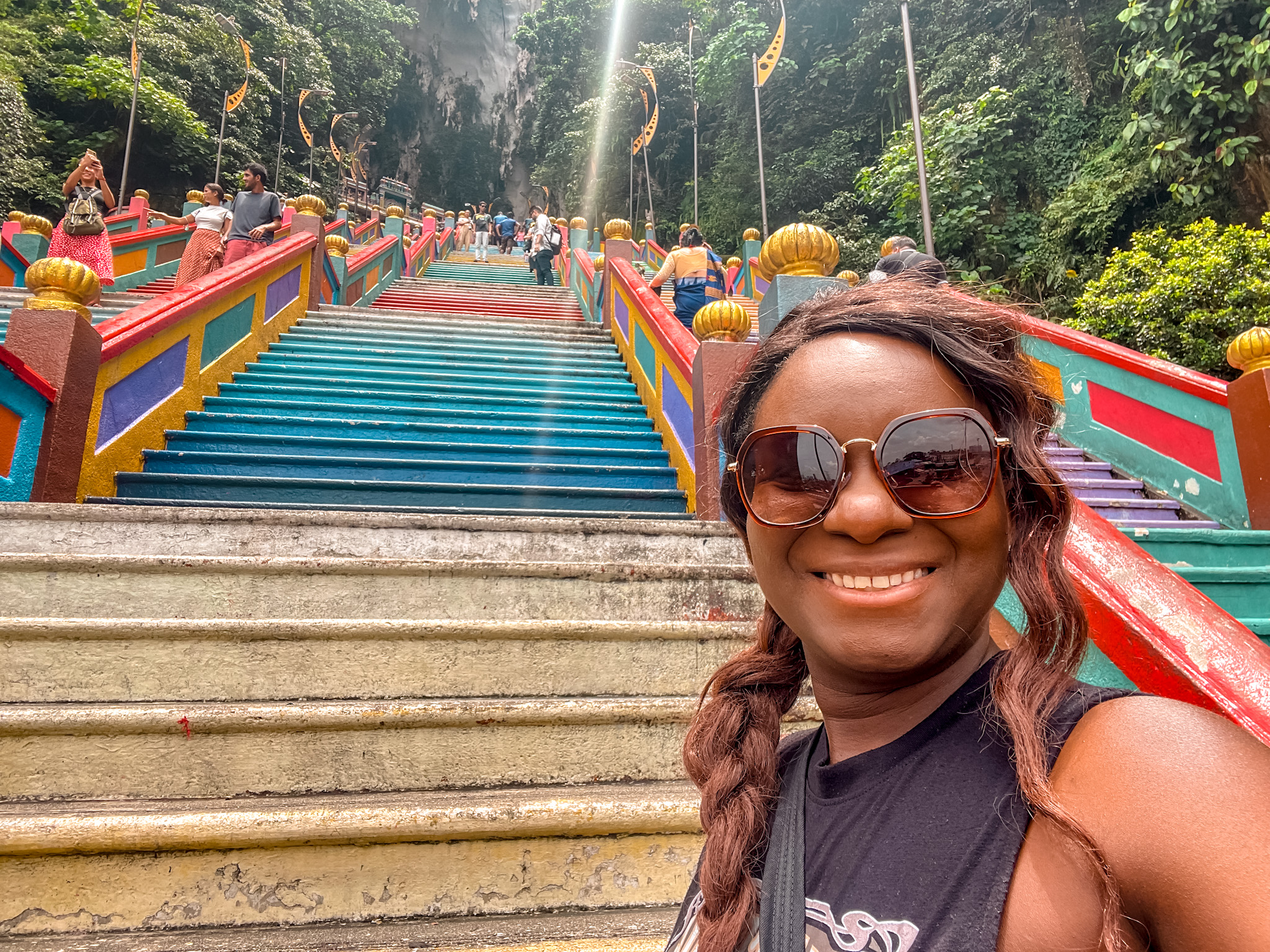
HOW I CLIMB (AND WHAT IT FEELS LIKE)
I start late, (but it's recommended to go early to avoid the heat) with water, hat, and temple-appropriate clothes. The 272 steps are straight up, wide and newly painted, with landings that make good breathers and photo angles back over the city. At the top, the cavern opens into light shafts and echoing chants; I circle clockwise to visit shrines, then pause under the skylight before descending. Steps can be slick after rain; hold the rail on wet days.
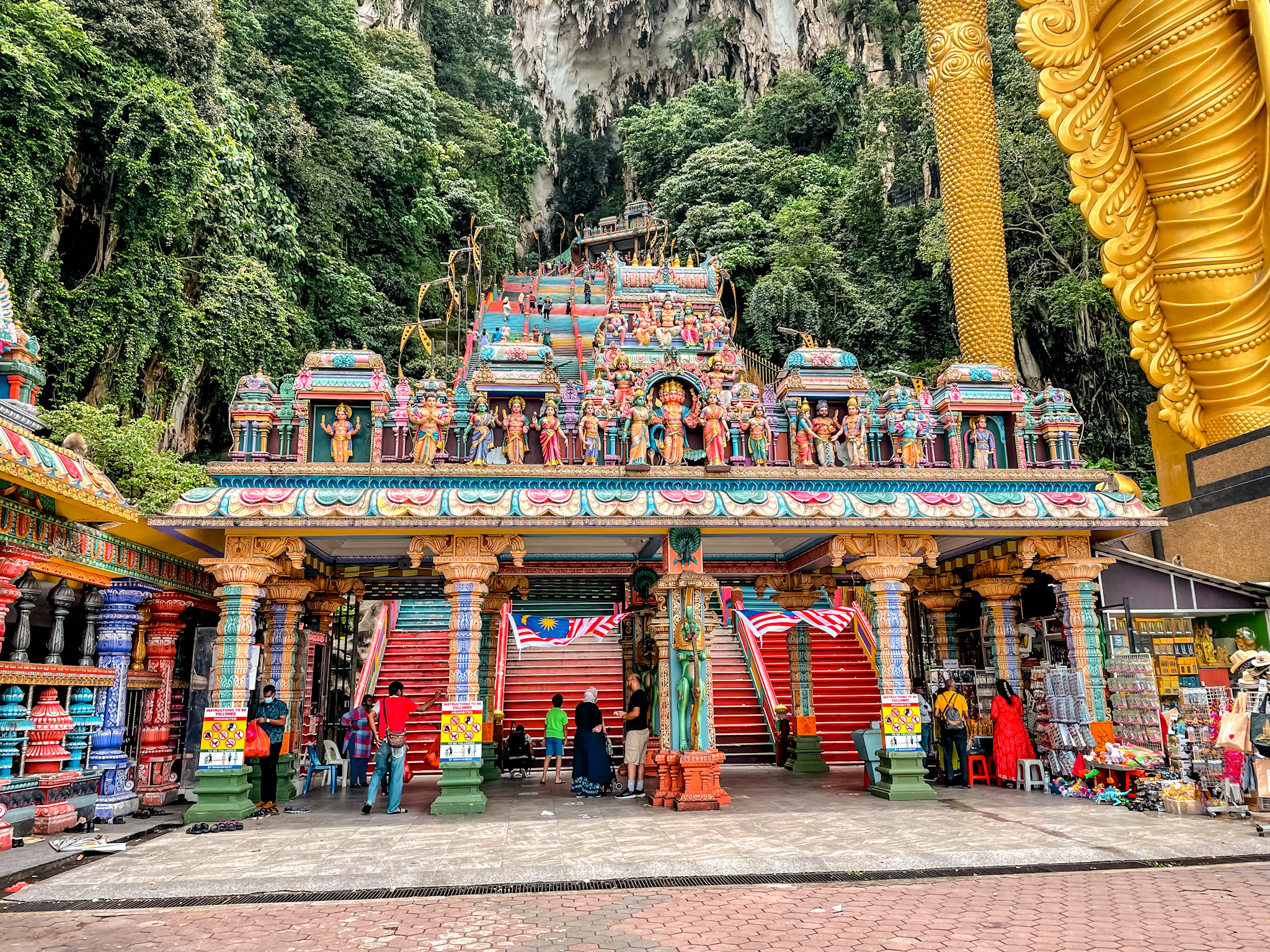
MONKEYS, SHOES, AND TEMPLE ETIQUETTE
The resident long-tailed macaques are bold. Do not feed them; keep bottles, snacks, and sunglasses zipped, monkeys recognize food shapes and will snatch. Inside shrines, remove shoes where indicated, keep shoulders/knees covered, and avoid flash during puja. If a ceremony is in progress, observe quietly from the side.
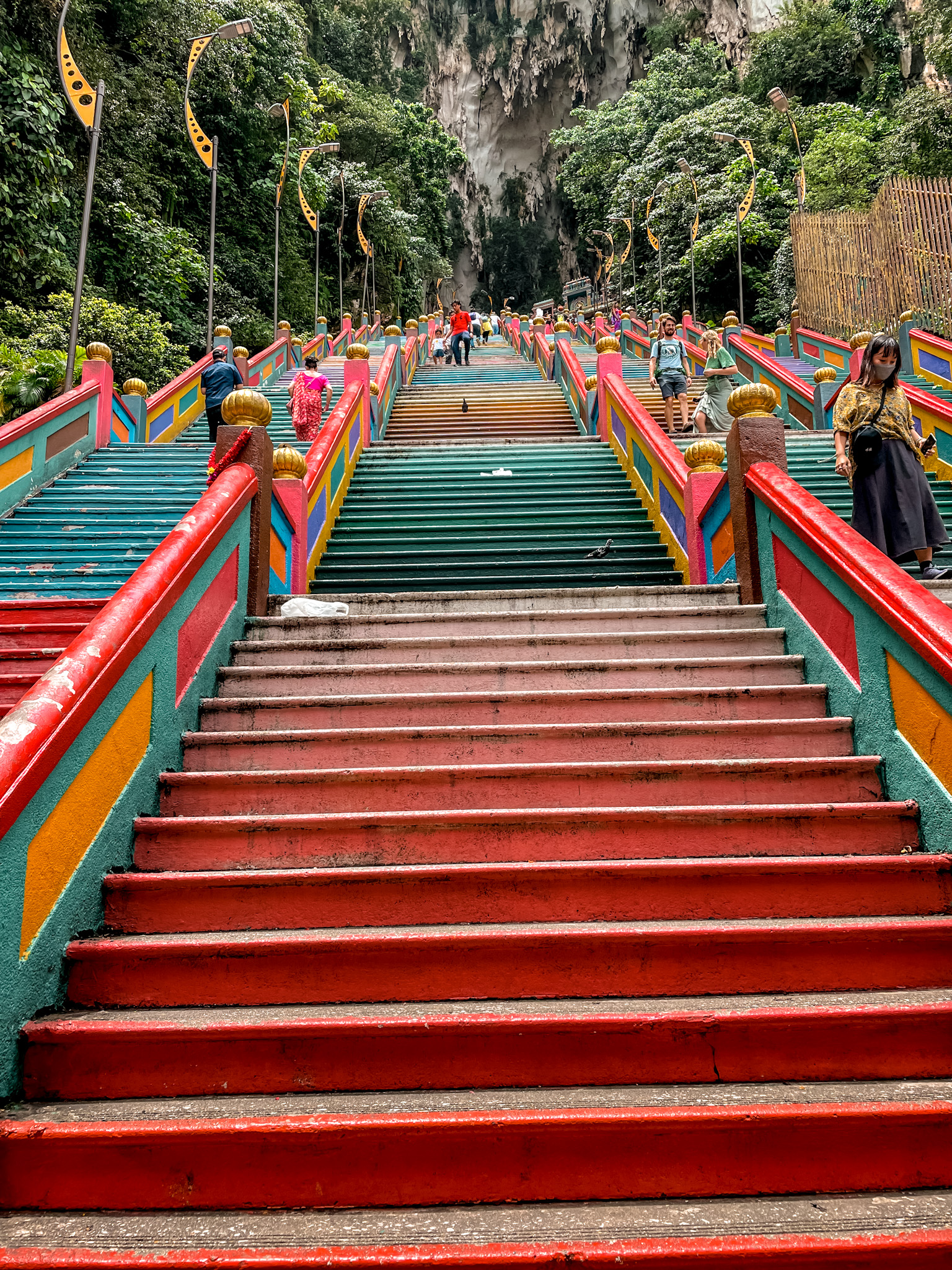
THAIPUSAM AT BATU CAVES (READ THIS IF YOUR DATES ALIGN)
Batu Caves is the focal point of Thaipusam in Malaysia (usually Jan/Feb, Tamil month of Thai; exact date varies). Pilgrims walk from Sri Mahamariamman Temple in Chinatown with milk pots and kavadi offerings, then ascend the 272 steps at dawn. It’s one of Southeast Asia’s great public acts of devotion, crowded, moving, and logistically intense. If you go, use trains, arrive very early, and follow marshal directions.
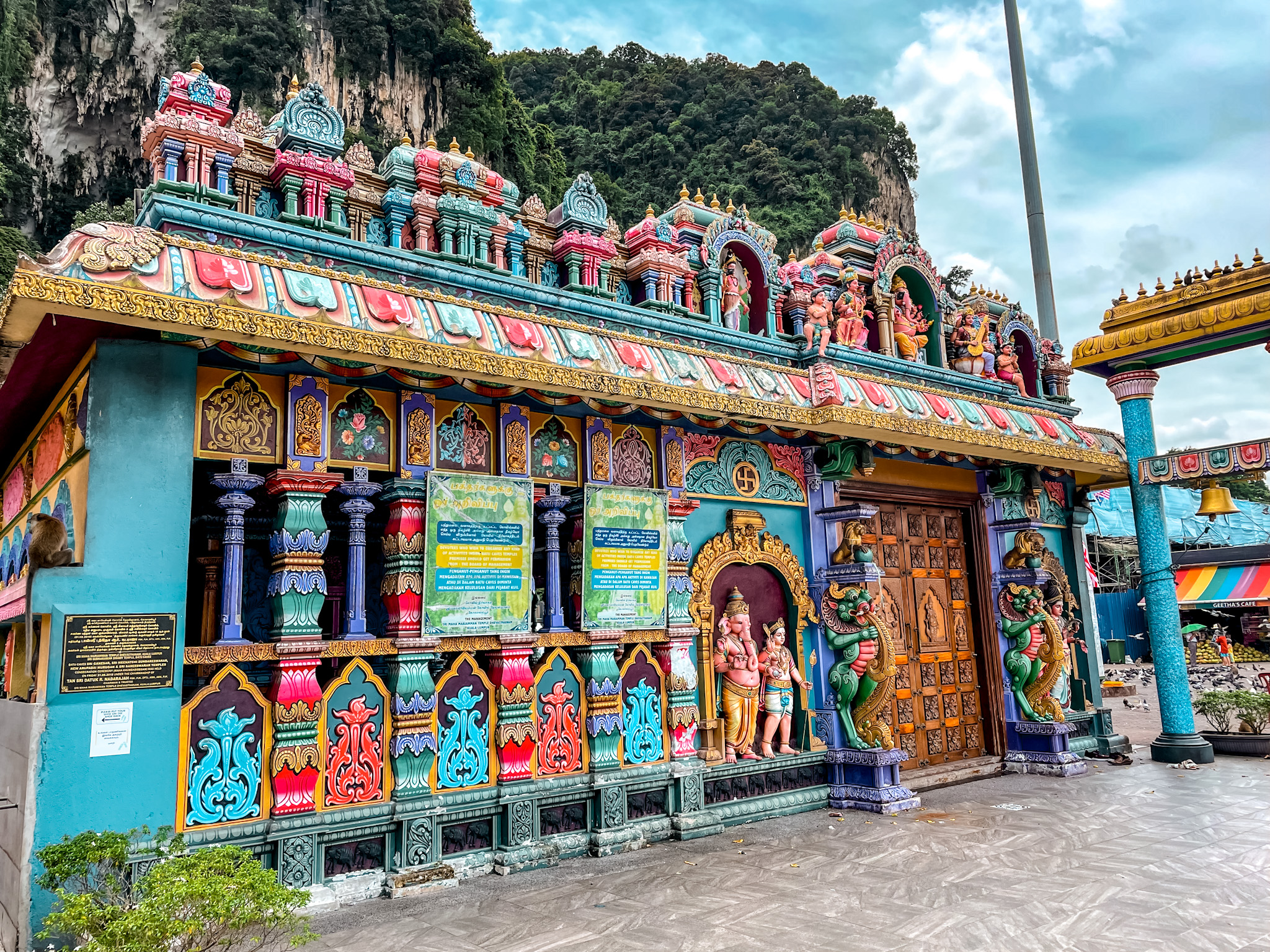
ROCK CLIMBING & SIDE QUESTS
The limestone buttresses around Batu Caves have long drawn rock climbers; guiding outfits offer bolted routes for different levels (weather and access dependent). If you want a low-effort extra, add Ramayana Cave for storytelling flair after your Temple Cave climb.
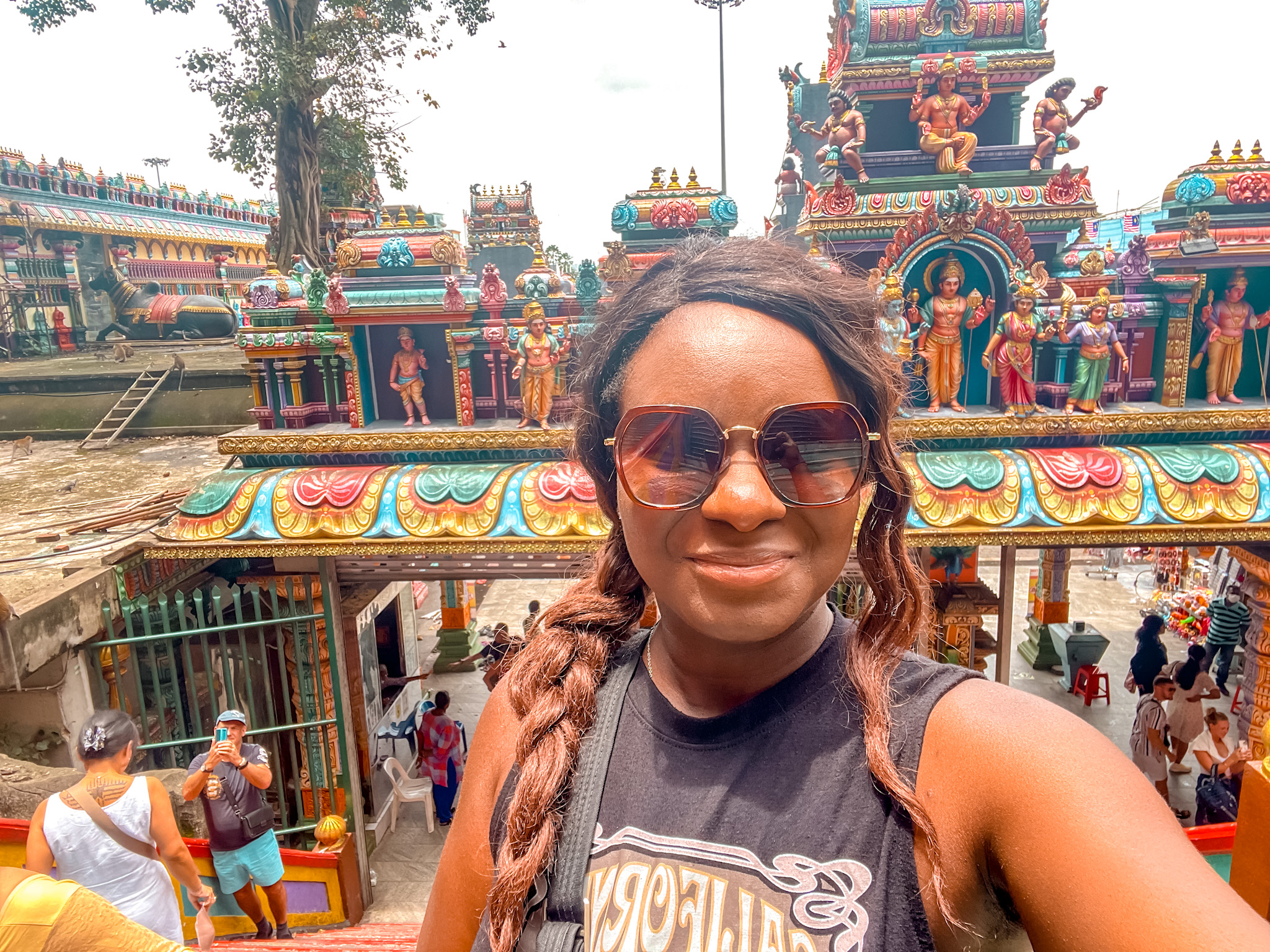
PHOTO TIPS (FAST WINS)
• Classic front shot: Frame the Murugan statue with the rainbow staircase; go wide at golden hour for softer shadows.
• Mid-stair landing: Turn around for city views and compress the colored steps below you.
• Temple Cave interior: Wait for a gap and shoot toward the skylight; push ISO to keep it sharp without flash.
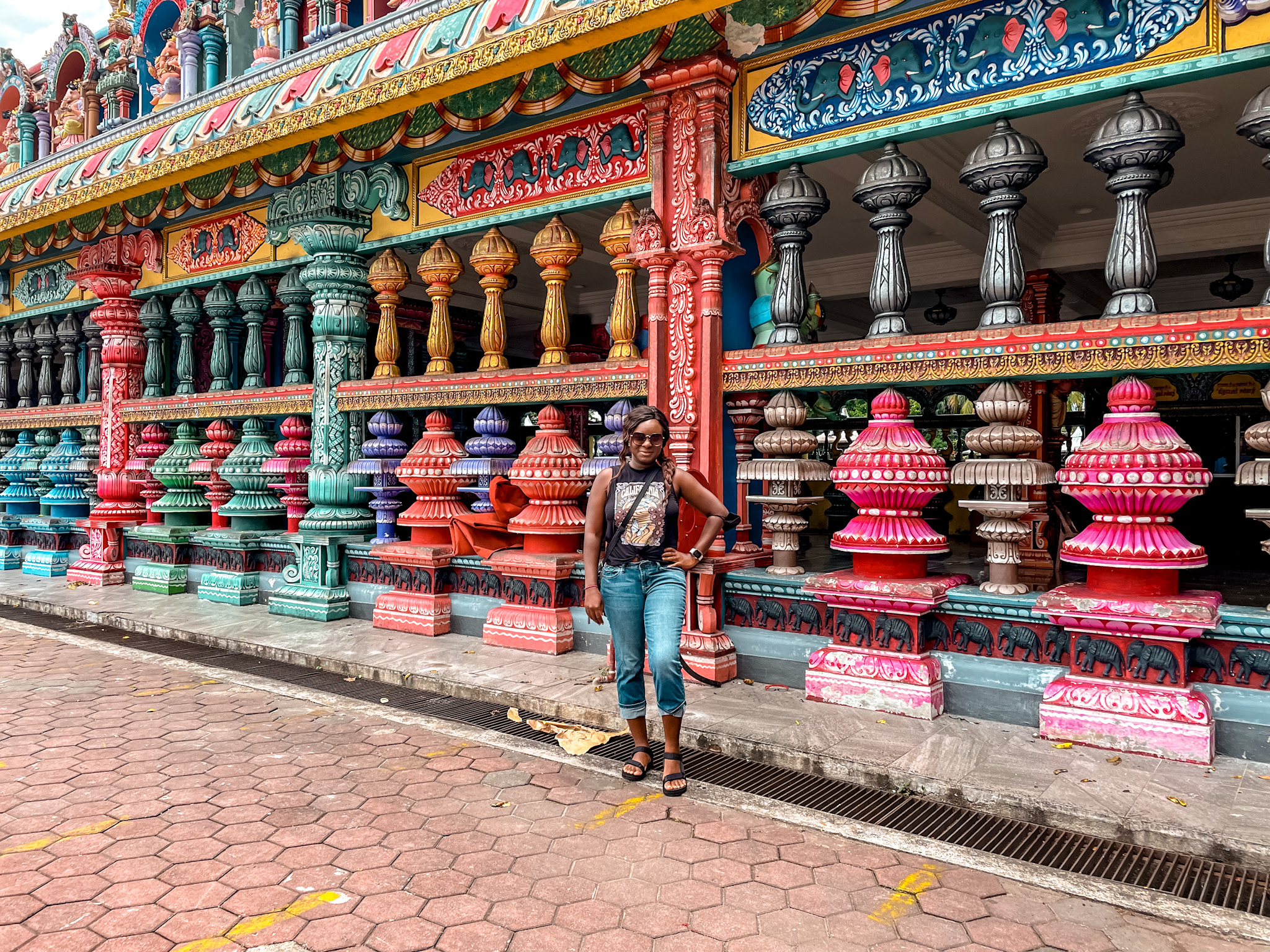
WHAT TO PACK & WHEN TO GO
Water, sunscreen, hat, non-slip shoes, a lightweight scarf/sarong if you’re unsure about dress. Best windows are early morning (cooler, fewer crowds) or late afternoon (softer light). Avoid midday oven-hours unless you’re building in shade breaks and lots of water. Most visitors spend 1.5–2 hours on site (longer during festivals).

KEY FACTS AT A GLANCE
• Age of limestone: often cited ~400 million years; Batu Caves name comes from nearby Sungai Batu (Batu River).
• Statue: Lord Murugan 42.7 m (140 ft), unveiled 2006—tallest statue in Malaysia.
• Stairs: 272 steps; rainbow repaint 2018.
• Hours & fees: Typically ~6:00–21:00; Temple Cave free; Ramayana Cave small fee.
• Train: KTM Komuter from KL Sentral → Batu Caves ~30–35 min; station at the gate.
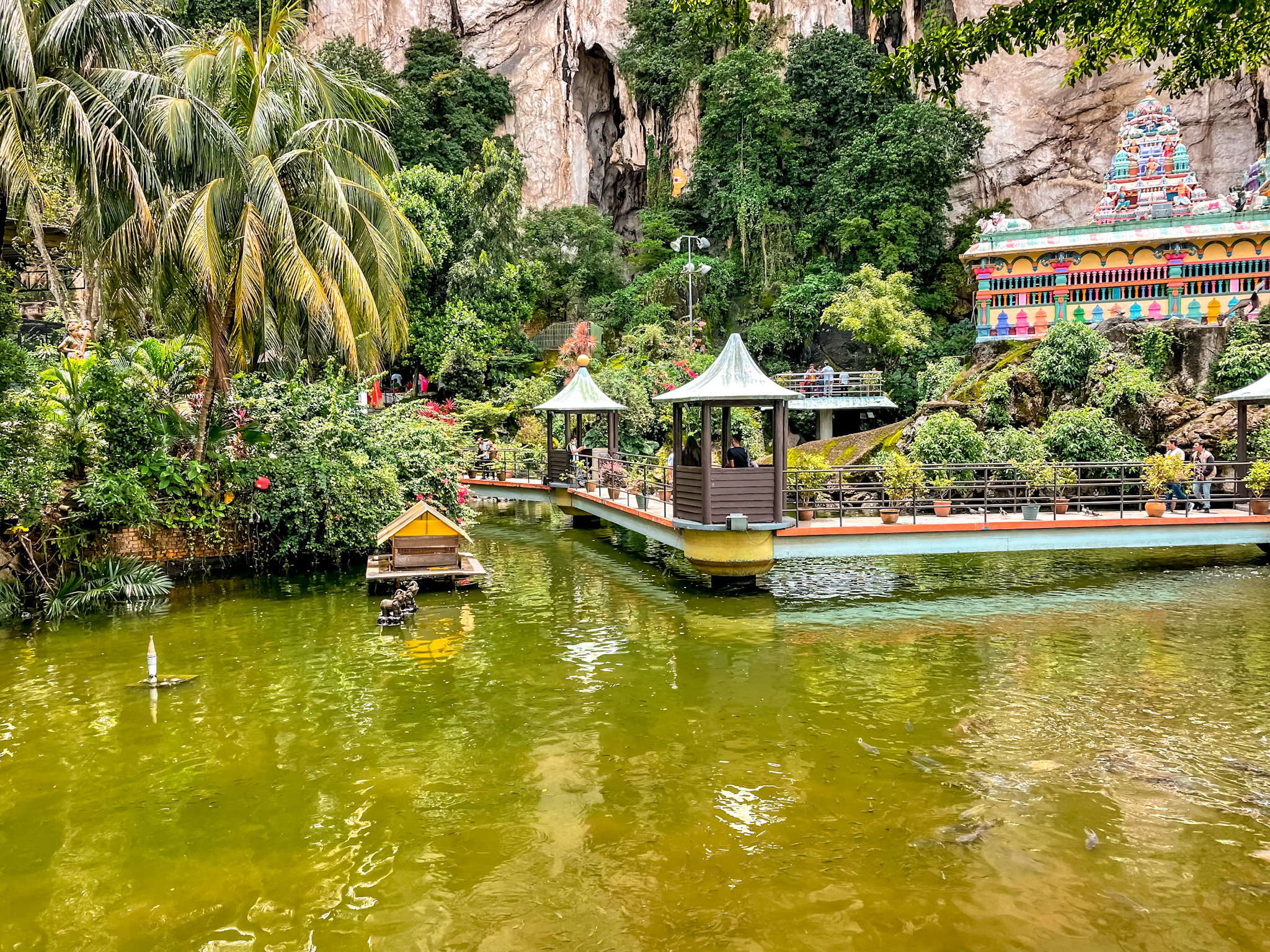
Batu Caves is one of those KL stops that earns the hype. It’s affordable, doable without a tour, and it gives you real texture, faith, community, and a view from the top you’ll remember long after your legs stop complaining. I’ve climbed it, sweat and all, and I’d do it again tomorrow.
